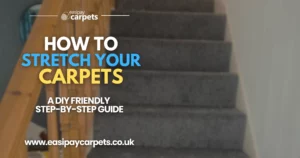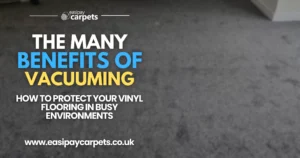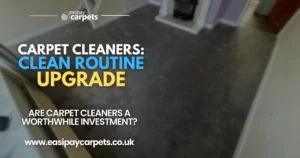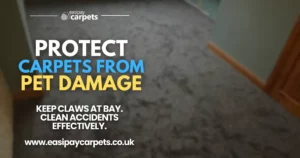
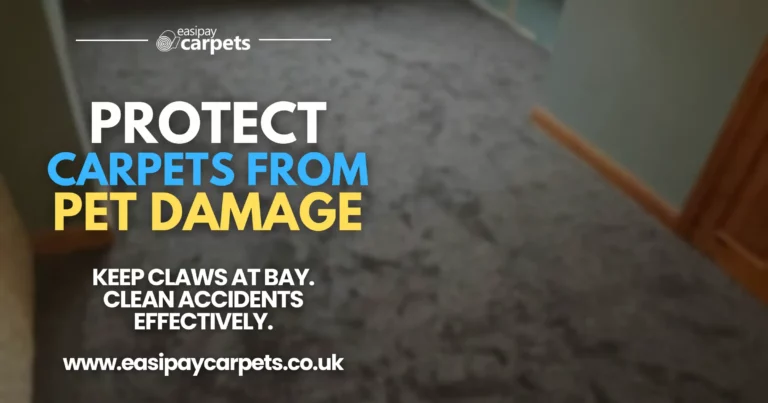
How To Protect Your Carpets From Pet Damage
Pets bring joy, companionship, and unconditional love to our homes, but they can also bring some challenges, especially when it comes to maintaining the condition of your carpets. From muddy paws and shedding fur to accidental spills and claw marks, pets can be tough on carpets. Fortunately, there are many ways to protect your carpets from pet damage while still enjoying the company of your furry friends. In this guide, we’ll cover practical tips for preventing pet-related damage, choosing the right carpet materials, and maintaining a pet-friendly home that keeps your carpets looking great.
Common Types of Pet Damage to Carpets
Before diving into prevention strategies, it’s helpful to understand the common types of damage that pets can cause to carpets:
Stains and Odours:
- Description: Pets can accidentally stain carpets with urine, vomit, or spilled food and water. These stains can be difficult to remove and may leave lingering odours if not cleaned promptly.
- Impact: Stains and odours can make carpets look unsightly and create unpleasant smells in your home.
Shedding and Fur Build-Up:
- Description: Pets that shed frequently can leave hair and dander embedded in carpet fibres, leading to a build-up that’s hard to clean.
- Impact: Pet fur can make carpets look dirty and can trigger allergies.
Claw Marks and Snags:
- Description: Pets with sharp claws, especially cats and active dogs, can snag or tear carpet fibres while running, scratching, or playing.
- Impact: Claw marks and snags can ruin the appearance of carpets and may require repairs or replacements.
Mud and Dirt:
- Description: Pets that spend time outdoors often bring in mud, dirt, and debris on their paws, which can stain carpets and grind into the fibres.
- Impact: Mud and dirt can cause discoloration and make carpets look worn over time.
How to Protect Your Carpets from Pet Damage
To keep your carpets looking their best while living with pets, follow these tips for protecting your carpets from common pet-related issues:
1. Use Pet-Friendly Rugs and Runners
- Tip: Place rugs and runners in high-traffic areas, such as entryways, hallways, and areas where your pet likes to spend time.
- Why It Works: Rugs and runners act as a barrier between your pet and the carpet, absorbing dirt, spills, and fur while protecting the underlying carpet.
- Pro Tip: Choose washable, durable rugs that are easy to clean and maintain, and match the rugs with the overall décor of your home.
2. Trim Your Pet’s Nails Regularly
- Tip: Keep your pet’s nails trimmed to reduce the risk of snagging or tearing carpet fibres.
- Why It Works: Shorter nails are less likely to get caught in carpet loops, preventing damage from scratching and running.
- Pro Tip: Invest in a pet nail grinder or visit a professional groomer regularly to keep your pet’s nails in check.
3. Clean Up Accidents Immediately
- Tip: Address pet accidents as soon as they happen to prevent stains and odours from setting into the carpet.
- Why It Works: Prompt cleaning prevents urine, vomit, or other spills from soaking into carpet fibres and padding, reducing the risk of permanent stains.
- Pro Tip: Use an enzyme-based cleaner specifically designed for pet stains, as these cleaners break down proteins and neutralize odours effectively.
4. Establish Pet Zones
- Tip: Create designated pet zones in your home, such as specific rooms or areas where your pet is allowed to roam freely.
- Why It Works: Limiting your pet’s access to certain areas reduces the chance of carpet damage and makes it easier to manage pet-related messes.
- Pro Tip: Use baby gates or pet barriers to keep pets in designated zones and off of carpeted areas where you want to minimize wear and tear.
5. Regularly Groom Your Pet
- Tip: Brush and bathe your pet regularly to reduce shedding and keep fur and dander at manageable levels.
- Why It Works: Regular grooming helps remove loose hair and minimizes the amount of fur that ends up on your carpet.
- Pro Tip: Use grooming tools designed for your pet’s specific coat type to make the process more effective.
6. Use Stain-Resistant Carpet Treatments
- Tip: Apply a stain-resistant carpet treatment or protector to help repel spills, stains, and dirt.
- Why It Works: Stain-resistant treatments create a protective barrier that makes it easier to clean up pet messes and prevents stains from penetrating carpet fibres.
- Pro Tip: Reapply the treatment as recommended, typically every six months to a year, to maintain its effectiveness.
7. Invest in a High-Quality Vacuum Cleaner
- Tip: Use a vacuum cleaner with strong suction and a HEPA filter to effectively remove pet hair, dander, and dirt from your carpets.
- Why It Works: A good vacuum cleaner helps keep your carpets clean and free from pet-related debris, reducing the risk of matting and wear.
- Pro Tip: Look for vacuums with pet-specific attachments, such as motorized brushes and upholstery tools, for better cleaning performance.
8. Place Mats at Entryways
- Tip: Place mats or rugs at entryways where your pet enters the house to catch dirt, mud, and moisture from their paws.
- Why It Works: Mats help trap debris before it reaches your carpet, making it easier to keep carpets clean and protected.
- Pro Tip: Choose absorbent, non-slip mats that are easy to shake out, wash, or replace when needed.
9. Use Furniture Covers and Protectors
- Tip: Use furniture covers, throws, or slipcovers on sofas and chairs to protect both your furniture and nearby carpets from pet hair and spills.
- Why It Works: Covers can be easily washed or replaced, keeping both your furniture and carpets cleaner and reducing the spread of pet hair.
- Pro Tip: Choose machine-washable covers that are easy to remove and maintain.
10. Train Your Pet
- Tip: Train your pet to follow basic commands and house rules, such as not jumping on furniture or staying off specific carpeted areas.
- Why It Works: Training helps manage your pet’s behaviour and reduces the likelihood of carpet damage from scratching, accidents, or rough play.
- Pro Tip: Use positive reinforcement and consistent training techniques to encourage good behaviour.
Choosing Pet-Friendly Carpets
If you’re in the market for new carpets and have pets at home, consider these pet-friendly carpet options to minimize damage:
Low-Pile Carpets:
Low-pile carpets are easier to clean and less likely to trap pet hair and dander compared to high-pile or shag carpets.Stain-Resistant Carpets:
Choose carpets with built-in stain resistance or those treated with protective coatings to repel spills and stains.Carpets with Synthetic Fibres:
Synthetic fibres like nylon, polyester, and olefin are durable and more resistant to pet-related damage than natural fibres.Carpets with Tight Weaves:
Carpets with tight weaves or loops are less likely to snag and are easier to maintain, making them a great choice for homes with pets.
Conclusion
Living with pets doesn’t mean you have to sacrifice the appearance and condition of your carpets. By following these practical tips for protecting your carpets from pet damage, you can keep your home clean, fresh, and comfortable for both you and your furry friends. From using pet-friendly rugs and stain-resistant treatments to regular grooming and training, these strategies will help you enjoy a pet-friendly home without compromising on the quality of your carpets.
Easipay Carpets can help you get brand new flooring without the high up-front cost – by simply letting you spread the cost of the flooring over time instead. There’s no interest on our plans so you aren’t spending a penny more than you would buying it outright and we include underlay, door trims, carpet grippers and laminate beading for free. Prices start from just £10 per week!
It starts with a free home appointment and quote, to get booked in at a time that suits you, tap the “Get Started” button below and fill out the contact form!
Still Got Questions? Here's 10 FAQs!
Use stain-resistant carpet treatments, clean up accidents immediately with enzyme-based cleaners, and place rugs or mats in high-traffic areas.
Low-pile, stain-resistant carpets made from synthetic fibres like nylon, polyester, or olefin are ideal for homes with pets.
Use a vacuum cleaner with strong suction, a HEPA filter, and pet-specific attachments to effectively remove pet hair from carpets.
It’s best to use enzyme-based cleaners designed for pet stains, as they break down proteins and neutralize odours more effectively than regular cleaners.
Keep your pet’s nails trimmed, provide scratching posts or mats for cats, and train your pets to avoid scratching carpeted areas.
Yes, placing rugs or runners in high-traffic and pet-prone areas can help protect carpets from dirt, spills, and wear.
Regular grooming, including brushing and bathing, helps reduce shedding and the amount of pet hair and dander that ends up on your carpets.
Let the mud dry, then vacuum up the loose dirt. Follow up with a damp cloth and a mild detergent to clean any remaining stains.
Vacuum regularly, use baking soda or a carpet deodorizer, and clean up accidents promptly with odour-neutralizing cleaners.
Yes, a rug pad provides additional cushioning, prevents slipping, and helps protect both the rug and the underlying carpet from wear and damage.
